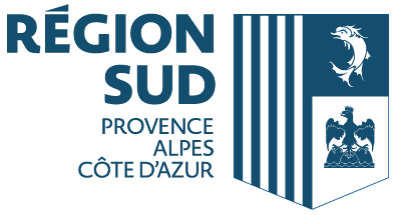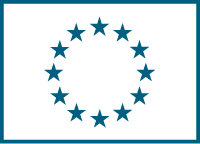Integrated Multi-Objective System for optimal management of urban drainage
(IMOS)
Date du début: 1 sept. 2001,
Date de fin: 31 août 2004
PROJET
TERMINÉ
Background
Wastewater control is a crucial issue, particularly in large urban areas. However two of the main objectives of wastewater control have yet to be achieved: the optimum management of the drainage system as a whole, including the limiting of risks of failure in sewage networks under both ordinary and critical conditions, and the reduction of environmental pollution.
The impact of drainage water effluents on bodies of water into which they flow is a key environmental problem. It is detrimental for the health of the ecosystem and, especially in highly urban areas, is strictly related to water management. The problem in Genoa becomes critical because of sewer overflows and waste water treatment plant effluent discharges combined in a closed body of water.
The environmental problem addressed in this project is of interest to the European Community because it is shared by most of the countries bordering the Mediterranean sea, where similar, typical, urban fabrics and morphological features make the treatment of first flush flows in urban areas quite difficult without development of innovative tools and means.
Objectives
The project uses real time multi-sensors (rain gauges, flowmeters, turbidity monitors, low cost meteorological radar), modelling activities (rain field forecasts and network modelling) and upgrades to infrastructure (sluice gates, pumping stations, volume rehabilitation, new SCADA system), to achieve the integrated multi-objective management of the drainage system in the urban environment of Genoa.
Forecast results were:
⢠Under ordinary conditions, an increased capability for treating first flush flows, controlling the pollution load to treatment plants and, consequently, safeguarding water bodies receiving wastewater;
⢠In emergencies, the now-casting of critical flows and their control (attenuation of flow peaks), through by-passes and temporary storage by water volumes.
Results
The implemented IMOS system is designed to prevent floods and optimise the functioning of water treatment plants.
It consists of:
- a multi-sensor survey system
- one underground tank, which can be connected to the drainage network, by a remote command
- many software models
- hydraulic control structures
- an integration system.
The sensors installed can be divided into three different types:
- sensors for rain survey (rain-gauges, meteorological radar)
- sensors for hydraulic status measurement of the drainage network (level detectors)
- sensors for detection of the drainage network pollution status (turbidity meters, spectrophotometer).
The models are aimed at simulating, reconstructing and short term (less than half an hour) predicting:
- rainfall fields
- hydrological response of the drainage network
- pollutant charge associated with the influent flows (first flush flows, other pollutants)
- delineation and extension of the flooded areas
- hydraulic simulation of the efficiency of the by-pass and flow peak attenuation solutions for water flows and pollutant charges.
The system works in this way:
- the rain falls are detected by the rain-gauges and the radar
- data is immediately transmitted to the central station, which predicts the rainfall in the short term, simulates the response of the drainage and suggests the actions to be taken, such as, for example, putting the underground tank into operation
- if the underground tank is connected to the drainage network, the flow will be directed into the tank and the flow peaks are cut
- the level sensors give the flow situation in real time, so that other actions can be planned and executed
- the pollution sensors allow a decision to be made as to whether the flowing waters in the terminal part of the drainage network must be sent to the treatment plant (high pollution level), or can be sent directly to the sea (low pollution level)
- checking the pollution status makes it possible to take the decision to open or close the sluice gate so that the waters can be directed to the sea or to the plant system; in this way the management of the treatment plant can be optimised.
The project achieved its objectives, even with different means and actions in comparison with those foreseen in the initial proposal.
In fact, in its previous version, another underground storage method was foreseen, with the purpose of temporary storage of polluted waters, delaying their transfer to the treatment plant.
But an accident occurred in the underground storage area in summer 2003, resulting in the beneficiary changing the project (authorised by EC - the project objectives described above are the new authorised ones): instead of delaying the transfer of water by temporary storage, the pollution status of the waters is analysed in real time and the water is sent for treatment or directly to the sea, depending on the pollution status.
The project has political and legislative implications, because it is applicable in many different geographical situations: many cities can apply a similar system in order to avoid or reduce floods and to better manage water treatment plants. The project is in fact highly transferable in similar situations.
The project is moderately innovative regarding the techniques employed, but it is highly innovative regarding the integration of the system for this kind of application.
The innovation consists of monitoring and simulating in real time the rain fields together with the drainage situation both regarding flows and pollution status and, consequently, allowing decisions to be taken about underground temporary storage and about separation of the water depending on its pollution status.
This innovative system is able to increase the return time (or reduce the frequency) of floods and to optimise the management of the depuration plants.
The socio economic effects can be illustrated by the fact the frequency of floods can be reduced and water treatment can be made more cost efficient.
The project will continue in the future with the extension of the system to other Genoa rivers. The system can improve the sustainability of life in the city of Genoa.
This project has been awarded the title of "Best of the Best" from a shortlist of 24 "Best" LIFE Environment projects in 2004-2005




